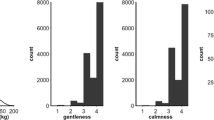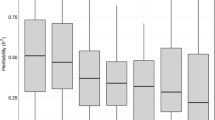Abstract.
In 1964, Walter Rothenbuhler proposed a two-gene model to explain phenotypic variance in the remarkable behavior in which honey bee workers remove dead brood from their colonies. Rothenbuhler's model proposed that one locus controls the uncapping of brood cells containing dead pupae, while a second controls the removal of the cell contents. We show here, through molecular techniques and quantitative trait loci (QTL) linkage mapping, that the genetic basis of hygienic behavior is more complex, and that many genes are likely to contribute to the behavior. In our cross, we detected seven suggestive QTLs associated with hygienic behavior. Each detected QTL controlled only 9–15% of the observed phenotypic variance in the character.
Similar content being viewed by others
Author information
Authors and Affiliations
Additional information
Electronic Publication
Rights and permissions
About this article
Cite this article
Lapidge, K.L., Oldroyd, B.P. & Spivak, M. Seven suggestive quantitative trait loci influence hygienic behavior of honey bees. Naturwissenschaften 89, 565–568 (2002). https://doi.org/10.1007/s00114-002-0371-6
Received:
Accepted:
Issue Date:
DOI: https://doi.org/10.1007/s00114-002-0371-6




